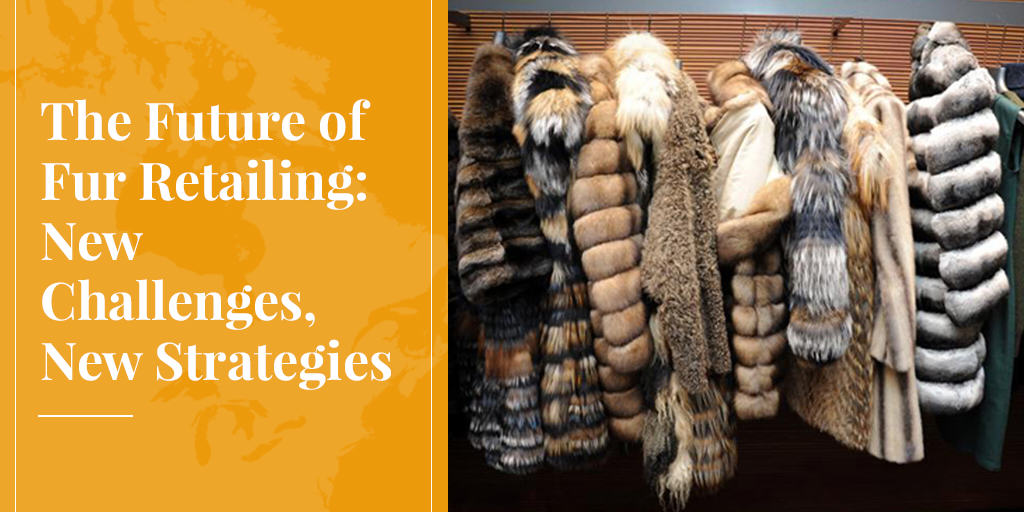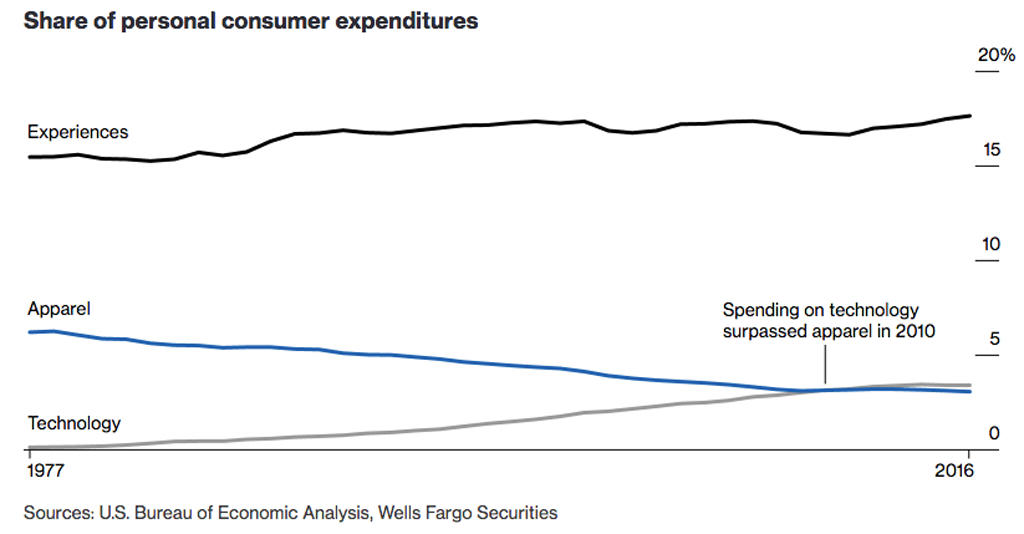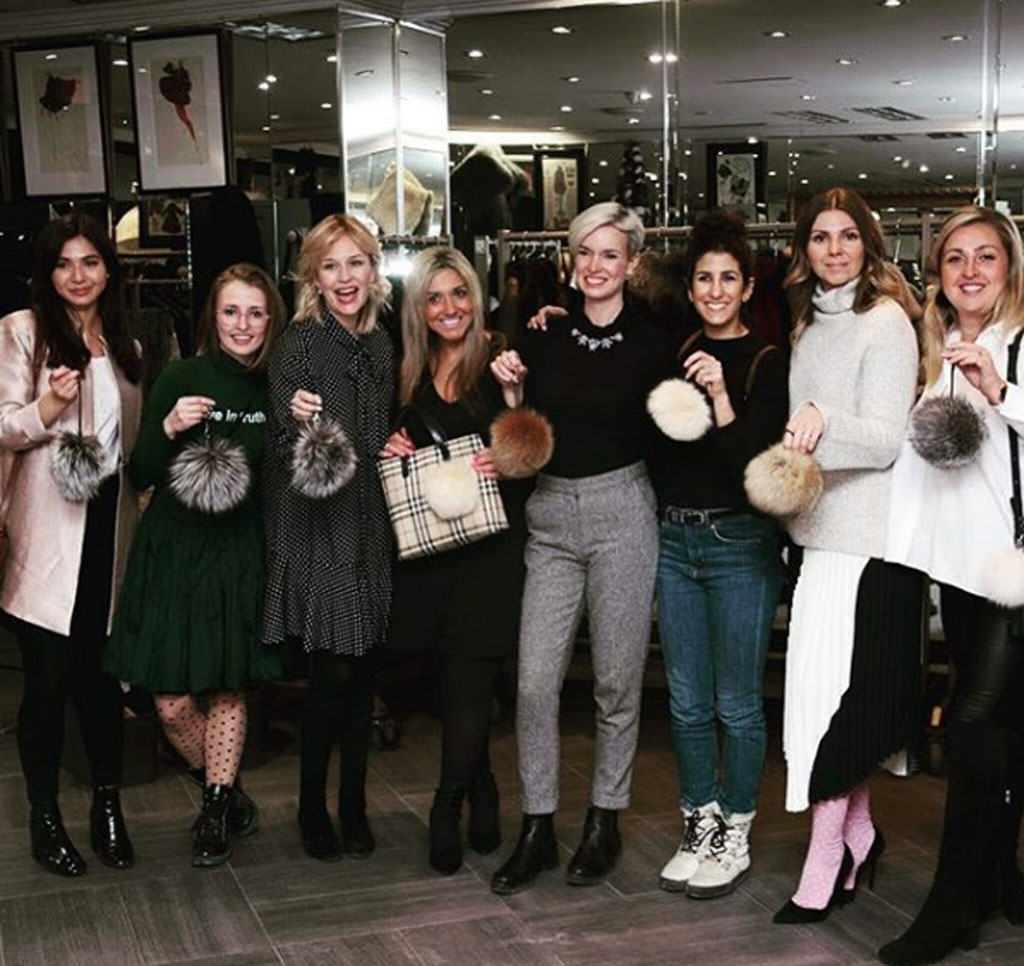
Like any business, fur retailing has its challenges, and some would say the challenges have never been tougher. But could there also be exciting opportunities for furriers who figure out how to navigate the brave new world of retailing that is emerging?
Let’s first take a quick look at the challenges. In “The Death of Clothing”, journalists at Bloomberg.com recently argued that the problems now plaguing apparel retailing go deeper than the ferocious competition from Amazon and other on-line retailers. The more profound problem is that consumers are spending less and less on clothing: “In 1977, clothing accounted for 6.2 percent of US household spending. … Four decades later, it’s plummeted to half that.”

In part, reduced spending on apparel reflects the success of the industry in lowering costs through off-shore production, vertical integration and other competitive strategies. But the decline also results from more casual lifestyles. With about half of Americans now saying they can wear jeans to their professional offices, there is less need to buy separate wardrobes for work and play.
It is clear that “dressing down” also has an impact on the fur business. And the fur trade is also dealing with animal activists, aging retailers, under-financed businesses with too little money for advertising, and other serious problems.
Bricks and Mortar vs On-line
So where is the good news for fur retailers in this gloomy scenario?
For one thing, Baltimore, Maryland furrier Richard Swartz points out, even the industry’s problems provide opportunities. “Unlike other businesses that have dwindled from lack of interest, the fur trade has received lots of attention over the last decades: attention has come from our opponents, as well as from fashion designers, celebrities wearing fur, and even the occasional large heist.”
As leaders of Greenpeace used to say: “Who cares what they write about us, so long as they spell our name right?”
Three of the fur trade’s traditional retail advantages also continue, says Swartz: “We are selling a blind item; we are selling many one-off items; and we sell services that not only generate cash flow, but also promote new sales and customer engagement.”
In other words, bricks-and-mortar fur retailers have a certain degree of protection from on-line marketers because fur apparel is not mass-produced or standardized, so consumers must come into the store to try on a coat or jacket. And evaluating fur requires specialized training and experience; consumers rely on the furrier’s expert knowledge (and reputation) to ensure they are receiving value for their money. Not least important, fur apparel requires on-going in-store maintenance, including off-season storage, cleaning, repairs and remodeling, which brings customers back into the store at regular intervals.
But these protections alone are not enough to assure success. “I believe that the success of each individual retailer or retail group — and indeed the retail trade as a whole — will be decided by the degree to which they can reinvent themselves for today’s reality,” says Swartz.
To profit from the new opportunities, in fact, retailers will have to learn new skills that allow them to run their businesses and market fur products in new ways.
Sharing the Fur Experience
One retail furrier who is exploring the potential of new technologies is Stewart Chadnick of Pat Flesher Furs, in Ottawa. He recently hosted 12 local bloggers for an exciting, hands-on fur experience in his store.
“We greeted the bloggers with a nice selection of wine and hors d’oeuvres while I presented a brief history of our store and an overview of the fur business. I had set up a big TV monitor and showed them the Fur Trade in Two Minutes Flat video from the home page of TruthAboutFur.com as an introduction. I followed that up with the new sustainability video produced by the International Fur Federation. The two videos answered many of their questions and stimulated some interesting discussion.
“After a tour of the store and vault, we took them into our workshop where we had prepared everything they needed to make their own fur pom-poms. We had a lot of fun and they loved it. Several were blogging right from the workshop!” says Chadnick.

All the bloggers posted very positive accounts of their visit, which resulted in several new customers coming into the store in the following days. Great, you may say, but how many furriers have the social media skills to organize a bloggers event? Chadnick is the first to admit that he doesn’t either.
“I know I will never understand social media well enough to use it effectively,” says Chadnick. “So my marketing agency set up our Facebook page and Instagram account. We meet weekly to discuss story ideas and what we’re doing, and they were the ones who made contact with the bloggers and suggested inviting them into the store. We all enjoyed the evening, the ladies had a great story to blog about, and after the event our page registered dozens of new followers. It’s win-win.”
Chadnick also produced a small brochure for the bloggers about why fur is an ethical choice, using information he took from TruthAboutFur.com.
“The website is a fabulous resource for retailers,” says Chadnick. “Everything we need for educating and reassuring consumers is there. And young people are very interested in our environmental story.”
Lessons for Fur Retailing
The bloggers’ event at Pat Flesher Furs provides a number of important lessons for retail furriers seeking success in today’s fast-changing marketplace:
- First, it shows the power of social media to reach out to young consumers who might otherwise not come into the store.
- Second, it shows the value of presenting fur as “an experience”, giving consumers an opportunity to learn about, touch, feel and even work with fur.
- Third, it shows that while the classic “fur story” of beauty, warmth, comfort and luxury will always be important, a new narrative is emerging that resonates strongly among younger consumers: the story of fur as an environmentally sustainable, long-lasting, recyclable, biodegradable, and ethical, natural material.
Retailing is changing, and the way fur is marketed is changing too, as I learned recently from a journalist researching retailing trends in Quebec. She told me that the furriers she had spoken with are selling more small pieces and accessories, and they are integrating a broader product mix, becoming more like outerwear stores or fashion boutiques. But she was impressed to learn that several now also make a point of promoting the environmental sustainability of fur as an important selling feature.
As consumers become more aware of the environmental problems caused by “fast fashion” and petroleum-based synthetics, the sustainability credentials of fur will clearly become more important …
And perhaps this is the best news of all as we plan for the future of fur retailing. Because as young people – and all consumers – become more aware of the environmental problems caused by “fast fashion” and petroleum-based synthetics, the sustainability credentials of fur will become even more important and appreciated.
In fact, the environmental benefits of using real fur may well be emerging as one of our most important “Unique Selling Propositions” (USP). After being so unfairly scapegoated for so many years, fur may finally be recognized as not only warm and beautiful, but also as an environmentally responsible and ethical clothing choice. Now that’s a powerful marketing story!
If you have ideas about new ways to market fur products at retail, please post a comment below; we’d love to hear from you.











I had never worn it (bought approx 5 years ago) but when I was doing the big throw-out I just couldn”t do it. So hung on to it. And actually despite it being faux fur, it”s amazingly warm but at the same time, it”s not a heavy coat. Have you ever tried a real leopard skin coat on? As well as feeling slightly queasy doing so, they”re incredibly heavy to wear. The coat really is the best of both worlds and will be worn in the future. Didn”t feel out of place either as in Brighton there were several women wearing faux fur. Can”t wait to dress up!!!
Do hang on to it 🙂 I was once given a faux fur fox coat, and was most upset when it was stolen! I’ve never tried a real leopard skin coat, but back in the days when these were still traded, fur dressers did not have the same techniques available that they have today for making real fur lighter. That said, Leonardo Dicaprio’s bear coat in “The Revenant” supposedly weighed more than 100 lbs when wet!
The entire model of Lysa Lash Furs is selling through intimate gatherings and luxe experiences. of Clients are spoiled with champagne, can spend hours browsing the collection, get to meet and be styled by the designer herself and of course receive a mini education on fur. This invite only experience proves a success spending rate of over 80%.